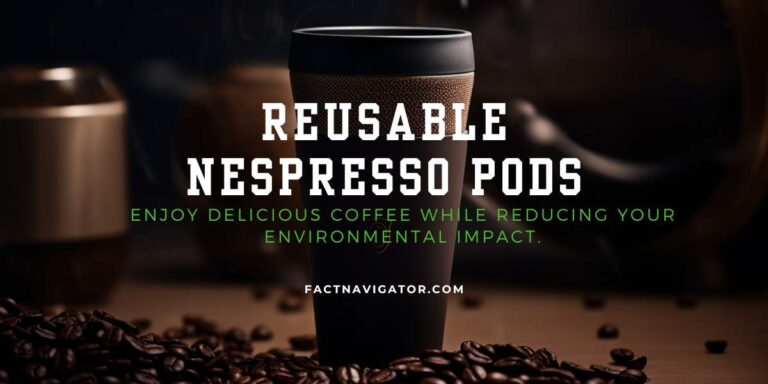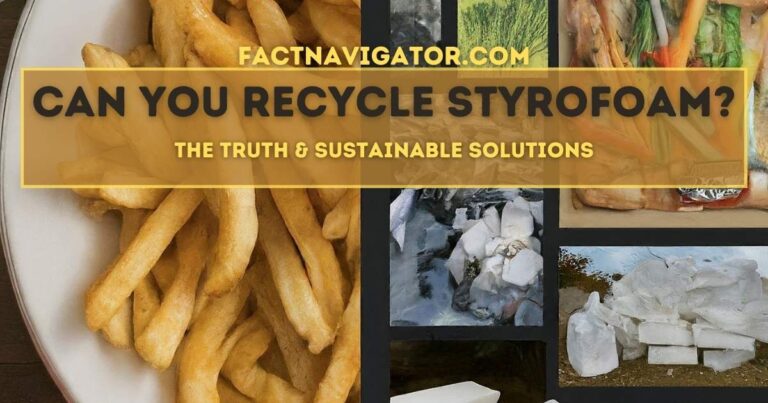What Does Biodegradable Mean for You & the Planet?

Have you ever wondered about the mysterious label “biodegradable” plastered on everything from food packaging to clothing? You’re not alone! In today’s eco-conscious world, understanding what does biodegradable mean is crucial for making informed choices that benefit both our planet and ourselves.
But what exactly is biodegradability? In simple terms, it refers to a material’s ability to be broken down naturally by microorganisms like bacteria and fungi into harmless substances like water, carbon dioxide, and compost. This natural breakdown process helps reduce pollution and waste, making biodegradability a highly sought-after characteristic.
The interest in biodegradable products is surging for several compelling reasons. Firstly, our landfills are overflowing with plastic and other non-biodegradable materials that can take centuries to decompose, harming ecosystems and wildlife. Biodegradable alternatives offer a glimmer of hope, promising to decompose much faster and return to the natural cycle.
Secondly, the potential health risks associated with some non-biodegradable materials are raising concerns. Studies suggest that microplastics, tiny fragments resulting from plastic breakdown, can enter our food chain and bodies, potentially causing health issues. Biodegradable alternatives pose less risk, contributing to a healthier environment for all.
Finally, the growing awareness of our environmental impact drives the demand for sustainable solutions. Biodegradable products offer a responsible way to minimize our footprint and contribute to a cleaner, healthier planet. By choosing biodegradable options, we can actively participate in creating a more sustainable future.
So, the next time you encounter the question “what does biodegradable mean,” remember it’s more than just a label. It’s a symbol of hope for a cleaner planet, healthier lives, and a more responsible future for us all.
I. What is Biodegradable? The Science Behind Biodegradability
Have you ever tossed a banana peel aside, only to be amazed by its speedy disappearance while a plastic bottle stubbornly lingers for years? Understanding what does biodegradable mean takes us on a fascinating journey into the hidden world of biodegradation.
Imagine an army of tiny heroes – bacteria, fungi, and even some insects – diligently dismantling organic matter. Their microscopic tools are enzymes, which break down complex molecules into simpler ones, ultimately returning them to the Earth’s natural cycle as water, carbon dioxide, and valuable nutrients. This remarkable process, known as biodegradation, is nature’s built-in cleanup and recycling mechanism.
But who are these microbial maestros? The team includes diverse bacteria, fungi, and even some insects, each with specialized appetites. Cellulose-loving bacteria tackle food scraps with gusto, while fungi excel at decomposing woody materials like leaves and branches. It’s a collaborative effort, ensuring efficient breakdown across a vast array of materials.
However, the speed of this “biodegradable” breakdown isn’t a one-size-fits-all story. Temperature, moisture, and oxygen availability play crucial roles. Picture a warm, moist compost pile buzzing with microbial activity versus a dry, cold landfill where biodegradation grinds to a halt.
So, what does biodegradable mean at the material level? It’s all about chemical structure and how readily microbes can gobble it up. Natural materials like food scraps and cotton have structures that are easily digestible to our microbial friends. In contrast, synthetic materials like plastic often have complex, tightly bound structures that resist microbial attack, leading to their painfully slow degradation.
The biodegradation timeline varies dramatically. Food scraps vanish in weeks, while a plastic bag might take centuries (yikes!). But here’s the catch: “biodegradable” doesn’t always guarantee a speedy farewell. Some “biodegradable” plastics require specific industrial composting facilities with controlled temperatures and oxygen levels, highlighting the complexities involved.
Think of these specialized facilities as biodegradation turbochargers. They create optimal conditions, accelerating the breakdown of organic materials and producing nutrient-rich compost for agriculture. This showcases the positive ripple effects of biodegradation beyond simply reducing waste.
So, the next time you ask what does biodegradable mean, remember it’s a intricate interplay between nature’s tiny decomposers, environmental factors, and the material itself. By understanding this science, we can make informed choices that contribute to a more sustainable future where biodegradation plays a vital role in minimizing waste and nourishing our planet.
II. Biodegradable vs. Compostable: Understanding the Difference
Confused about the terms “biodegradable” and “compostable”? You’re not alone! While they seem similar, they have distinct meanings and implications. Let’s unravel the mystery and help you navigate the world of sustainable choices.
1. Clarifying the Confusion: Not All Biodegradable Things Are Compostable
Thinking “biodegradable” automatically means “compostable”? Not quite! Here’s the key difference:
- Biodegradable: Simply means a material can break down naturally over time, though the process can be slow and vary greatly depending on the material and environment. It might take years or even centuries for some “biodegradable” items to decompose fully.
- Compostable: Guarantees much faster breakdown, typically within 3 months in proper composting conditions (industrial facilities or even home settings). The resulting compost is safe and beneficial for plant growth.
Think of it like this: All compostable materials are inherently biodegradable, but not everything labeled “biodegradable” is truly compostable.
2. Importance of Clear Labeling and Certifications
With this distinction in mind, responsible consumers need to be wary of greenwashing. Look for clear labeling and certifications to ensure you’re making informed choices:
- Certified Compostable: Look for this specific label alongside logos from reputable organizations like BPI (Biodegradable Products Institute) or USCC (US Composting Council). These certifications guarantee adherence to strict standards for breakdown speed, safety, and suitability for composting.
- Beware of Greenwashing: Some “biodegradable” labels might not represent true compostability. Scrutinize claims and look for recognized certifications to avoid misleading practices.
3. Choosing the Right Option: Biodegradable or Compostable?
The choice depends on your specific needs and disposal methods:
- Home Composting: Opt for certified compostable items like food scraps and yard waste. These break down quickly in your home bin, creating nutrient-rich compost for your garden.
- Landfill Disposal: Biodegradable alternatives might be suitable for items like paper towels or tissues destined for landfills. However, remember the breakdown process might be slow and the environmental impact less desirable compared to true composting.
Remember: Every conscious choice counts! By understanding the differences and making informed decisions, you contribute to a more sustainable future. It’s not just about “what does biodegradable mean,” but about making choices that benefit our planet and its resources.
Also Read: 10desires.org Health: A Holistic Approach to Wellness
III. Beyond the Buzzword: The Reality of Biodegradable Products
While “biodegradable” might sound like a magic bullet for environmental woes, there’s more to the story than meets the eye. Let’s delve into the realities of these products, navigating both limitations and potential, to understand their true impact.
1. Addressing Limitations and Challenges: Not a Flawless Solution
Biodegradable materials aren’t without their drawbacks. Some may break down into microplastics, tiny fragments harmful to ecosystems and potentially entering our food chain. Additionally, certain biodegradable products require specific composting conditions, not always available in standard waste management systems, leading to incomplete breakdown.
The good news? Research and development are actively addressing these challenges. Scientists are continuously innovating materials that decompose faster, minimize microplastic formation, and adapt to diverse composting environments. However, responsible consumption and waste management remain crucial partners in realizing the full potential of biodegradability.
2. Looking Towards a Sustainable Future
Biodegradable products, when used thoughtfully, can offer significant benefits. Imagine landfills shrinking, replaced by nutrient-rich compost nourishing our soil. Picture cleaner oceans and healthier ecosystems thriving without plastic pollution. This is the future a widespread adoption of truly sustainable biodegradable products can help create.
But remember, biodegradability alone isn’t the golden ticket. We must pair it with responsible consumption habits like reducing overall waste, choosing durable products, and properly disposing of biodegradable materials in appropriate composting facilities.
The power to shape a sustainable future lies within our choices. By making informed decisions, supporting companies committed to truly biodegradable solutions, and advocating for better waste management systems, we can ensure that “biodegradable” doesn’t remain just a buzzword, but a transformative force for a healthier planet for generations to come.
Remember, every action, however small, contributes to a larger impact. Embrace the power of informed choices and be a part of the solution!
IV. Examples of Biodegradable Products: Unveiling a Greener Shopping Basket
Biodegradable options are blooming in various categories, offering a more sustainable alternative to traditional products. Here’s a glimpse into this diverse world:
1. Food Packaging
- Plant-based films: Made from cellulose or starch, these wrap fruits, vegetables, and snacks, decomposing naturally within weeks.
- Mushroom packaging: This innovative option uses mycelium (fungus roots) to create sturdy and compostable packaging for various food items.
- Biodegradable paperboard boxes: These replace plastic-lined boxes, readily breaking down in composting facilities.
2. Clothing
- Organic cotton: This natural fiber biodegrades faster than conventional cotton, requiring less water and chemicals in production.
- Bamboo clothing: Growing rapidly and requiring minimal resources, bamboo textiles decompose quickly and are naturally soft and breathable.
- Linen: This classic fabric, made from flax fibers, is naturally biodegradable and durable, making it a timeless choice.
3. Personal Care Items
- Bamboo toothbrushes: Ditch the plastic and opt for these eco-friendly alternatives, which biodegrade within months.
- Solid shampoos and soaps: These water-free options often come in biodegradable packaging and are free of harsh chemicals, reducing environmental impact.
- Compostable sponges and cloths: Made from natural materials like cellulose or loofah, these offer a sustainable alternative to synthetic sponges and cleaning cloths.
Remember: While these examples showcase the potential of biodegradability, it’s crucial to choose certified products for guaranteed breakdown and environmental benefits.
V. Misconceptions and Greenwashing
The “biodegradable” label can be misleading, and greenwashing tactics sometimes obscure the true story. Let’s untangle some common misconceptions:
- Misconception 1: All Biodegradable Products Are Compostable: Not true! While all compostable products are biodegradable, some “biodegradable” options may require specific composting conditions or break down slowly, potentially leaving microplastics behind.
- Misconception 2: Biodegradable Products Eliminate Waste: While they contribute to a circular economy, biodegradability alone doesn’t solve the waste problem. Reducing consumption, choosing durable products, and proper disposal are equally important.
- Misconception 3: Biodegradable Products Are Always Better: Consider the overall environmental impact. Some biodegradable options might require more resources or energy to produce than traditional alternatives.
1. Avoiding Greenwashing
- Look for certifications: Opt for products with recognized certifications like “compostable” from credible organizations like BPI or USCC.
- Scrutinize claims: Don’t be fooled by vague terms like “eco-friendly” or “natural.” Research the specific material and its breakdown process.
- Be mindful of packaging: Even “biodegradable” products might have non-biodegradable packaging. Choose products with minimal or compostable packaging.
By understanding these nuances and being an informed consumer, you can navigate the world of biodegradable products effectively, making choices that truly contribute to a sustainable future. Remember, every informed purchase is a step towards a healthier planet!
VI. Conclusion: Demystifying “What Does Biodegradable Mean” and Empowering Sustainable Choices
So, what does biodegradable mean in the grand scheme of things? It’s not just a label, but a gateway to understanding our impact on the planet and making conscious choices for a healthier future. We’ve explored the science behind biodegradation, the often overlooked distinction between “biodegradable” and “compostable,” and the realities of these materials.
Remember, the journey doesn’t end here. Biodegradability is a complex topic with nuances and ongoing research. But by understanding the key takeaways, you’re empowered to make informed decisions:
- Biodegradability isn’t a one-size-fits-all solution. Look beyond labels and understand the specific breakdown speed, composting requirements, and potential limitations of different materials.
- Certified compostable products are your allies. Opting for these guarantees faster breakdown, safety for the environment, and valuable compost for your garden or community initiatives.
- Responsible consumption goes hand-in-hand with biodegradability. Reduce overall waste, choose durable alternatives, and dispose of biodegradable materials responsibly in suitable composting facilities.
While the road to a sustainable future might seem daunting, remember that every action counts. By embracing conscious choices, supporting responsible businesses, and advocating for better waste management systems, you become a powerful force for change.
So, let’s move beyond simply asking “what does biodegradable mean” and start making informed choices that translate to real impact. Together, we can create a world where biodegradability isn’t just a buzzword, but a cornerstone of a healthier planet and a brighter future for generations to come.





